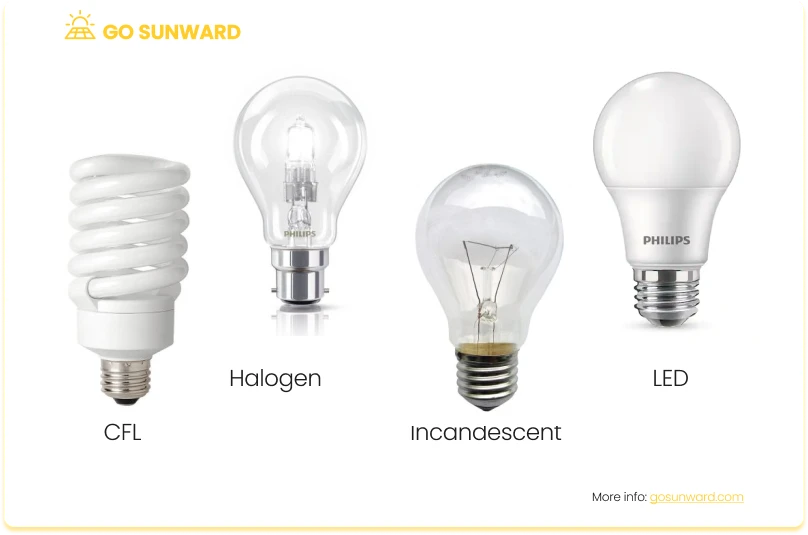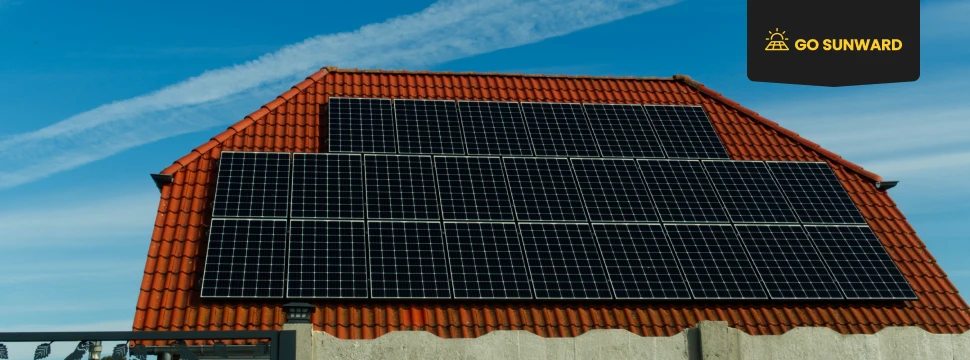Saving Electricity: 10 Ways To Save On Your Electricity Bill
Electricity is an indispensable part of our modern lives, powering our homes, devices, and daily routines. However, as our reliance on electricity grows, so does the strain on our wallets and the environment. The good news is that numerous strategies and techniques help you save electricity, and lower your electricity bill while reducing your carbon footprint.
This comprehensive article will explore ten practical and effective ways to save electricity without sacrificing comfort or convenience. From embracing energy-efficient appliances to adopting simple yet impactful habits, you’ll discover numerous ways that will help you in your mission of saving electricity.
If you’re a corporate looking for a way save using solar esg goals, then go here. If you’re simply looking for ways to save on your electricity bill, then keep reading!
Electricity Usage & Costs 101
Before we delve into some saving electricity tips, let’s first look at our electricity usage patterns and the costs associated with it.
Based on Energy Information Administration (EIA) data for 2022, electricity consumption in the United States reached an unprecedented 4.05 trillion kWh, marking a significant increase of more than 14 times higher than the 1950 figure. Despite expectations of a slower growth trajectory in future electricity demand, attributed to advancements in energy end-use efficiency that will balance economic expansion, electricity is poised to retain its pivotal role as a cornerstone of society and the economy.
The average electricity consumption and expenses for a household in the United States vary widely and is dependent on several factors like property size, geographical location, appliance efficiency, and local utility tariffs. As a general approximation, during 2021, the typical annual electricity usage for a residential customer in the US amounted to 10,632 kWh, translating to an average monthly consumption of approximately 886 kWh.
In terms of cost, our research shows that the annual average retail price of electricity in the United States stood at approximately 12.49 cents per kilowatt-hour (kWh) in 2022. This overall average encompasses distinct retail electricity prices for major categories of utility customers:
- Residential: 15.12 cents (¢) per kWh
- Commercial: 12.55¢ per kWh
- Industrial: 8.45¢ per kWh
- Transportation: 11.66¢ per kWh
Residential and commercial consumers often face higher retail electricity prices, primarily due to the elevated distribution costs associated with supplying electricity to these segments. Conversely, industrial users typically operate with larger electricity demands, frequently at higher voltages, resulting in a more streamlined and cost-effective supply. The electricity retail price for industrial clients usually mirrors the fluctuations seen in the wholesale electricity market.
Balancing Cost and Climate: The Importance Of Saving Electricity
Pertinently, a combination of geopolitical factors, rising electricity demand, and substantial challenges in the global energy sector has triggered a notable upswing in electricity costs for consumers worldwide in recent years. In the United States, residential customers experienced a 13% surge in their average monthly electricity bills from 2021 to 2022. This upward trend has persisted through 2023.
In fact, the majority of households across the US allocate between 2% and 3% of their yearly income to cover electricity costs. As prices have surged in recent years, an increasing number of American households find themselves compelled to cut back on essential expenses, including healthcare and groceries, to meet their energy bills.
Alongside the mounting financial considerations associated with electricity usage, there are rising concerns about the impact high energy consumption has on the environment and climate change. As the world grapples with the consequences of greenhouse gas emissions and resource depletion, the imperative to reduce energy consumption has become a paramount global concern. The extensive use of fossil fuels and non-renewable resources for energy generation not only accelerates global warming but also leads to various forms of pollution that harm ecosystems and public health. To mitigate these challenges, there is a growing call for energy efficiency, renewable energy sources (such as solar energy), and sustainable practices to curb the adverse effects of high energy consumption and pave the way for a shift to a low-carbon global economy.
Top Tips For Saving Electricity
So how can you balance cost and climate considerations with your own electricity use? Here are 10 ways to save on your electricity bill and conserve electricity:
Saving Electricity Idea #1: Energy Audit
Initiating an energy audit represents a crucial initial step in substantially reducing your electricity expenses. Essentially, it entails a systematic evaluation of your household’s energy consumption, facilitating the identification of areas where energy is needlessly squandered and where enhancements can be implemented. It’s akin to administering a comprehensive health check-up to your home, meticulously diagnosing energy inefficiencies.
While the option of hiring a professional energy auditor is available, individuals can also take matters into their own hands by conducting a do-it-yourself (DIY) energy audit. This self-assessment generally encompasses a thorough examination of your home’s insulation, lighting, appliances, heating and cooling systems, as well as hot and cold water setups, pinpointing areas ripe for energy-saving interventions. Gaining insight into your energy usage patterns, a byproduct of this audit, equips you with the knowledge needed to make informed choices regarding where and how to implement improvements.
Saving Electricity Idea #2: Understand Your Utility Rate
Choosing the appropriate utility rate plan is a financial decision of great consequence, with a substantial impact on your electricity expenses. Various rate plans cater to different consumption habits and lifestyles, making it vital to align your choice with your household’s energy patterns.
Two common options are time-of-use rates and tiered pricing. Time-of-use rates fluctuate based on the time of day, reflecting peak and off-peak electricity demand. This plan can be beneficial if you can shift energy-intensive tasks to off-peak hours when rates are lower. On the other hand, tiered pricing involves varying rates depending on total electricity consumption. Initially, you pay a lower rate up to a specified threshold, after which you enter a higher-priced tier.
To make an informed decision, it’s essential to assess your household’s energy use. Consider factors like your presence during peak hours and the flexibility of your appliances. This understanding will aid in choosing a rate plan that not only fits your lifestyle but also optimizes potential savings. Ultimately, the right rate plan can help manage average electricity costs more efficiently and reduce your environmental impact.
Saving Electricity Idea #3: Adopt Smart Solutions
In the era of digital advancement, smart home technology has emerged as a potent tool for efficient energy management. This technology encompasses an array of interconnected devices and systems geared toward enhancing control and monitoring of various aspects of your home, including energy consumption. Take smart thermostats, for example, which have gained widespread popularity in regulating indoor temperatures. They grant homeowners the ability to remotely adjust heating and cooling settings, schedule temperature changes, and even learn from their routines to automatically optimize energy use.
Another element of smart home technology is lighting controls, such as dimmer switches, that enable remote management of your lighting. This ensures lights are only active when necessary and can be dimmed or turned off when rooms are unoccupied. Energy monitoring systems offer real-time insights into your energy usage, furnishing you with data to make informed decisions about how and when to employ electricity more efficiently. Collectively, these smart technologies not only improve convenience but also substantially reduce energy wastage by enabling homeowners to fine-tune their energy consumption.
Saving Electricity Idea #4: Insulate, Insulate, Insulate
Efficiently sealing gaps and insulating your home can make a significant difference in energy savings. It helps in retaining conditioned air, making your living spaces more comfortable while easing the burden on your heating and cooling systems. Common areas where leaks occur include windows, doors, and openings around pipes, vents, and electrical outlets. These gaps allow conditioned air to escape and drafts to enter, leading to increased energy costs.
For proactive homeowners, many sealing and insulation tasks can be approached as DIY projects. Simple solutions include using weatherstripping or caulking to seal gaps around windows and doors, installing door sweeps to prevent drafts, and placing foam gaskets behind switch plates and outlets to reduce air leakage. However, for more extensive or complex projects, especially those involving attic or wall insulation, it is often advisable to seek professional assistance.

Saving Electricity Idea #5: Change Consumption Patterns & Turn Off Devices
Aside from technological upgrades, adopting energy-saving habits in your daily life can have a significant impact on curbing electricity costs and lessening your environmental footprint. Simple yet effective behavioral changes can make a substantial difference. Make sure you switch off lights and appliances when they’re not in use. Leaving lights on in unoccupied rooms or keeping devices continuously plugged in or on standby, like televisions, fans, dishwasher or microwave, can result in unnecessary energy consumption. To prevent energy wastage from ‘vampire’ appliances, consider unplugging devices or using smart power strips to minimize standby power consumption.
Another crucial practice is optimizing your thermostat settings. During colder months, lowering the thermostat a few degrees when you’re away or asleep can save energy without compromising comfort. Conversely, raising the thermostat slightly can achieve a similar effect in warmer months. These seemingly minor adjustments can translate into noticeable reductions in energy consumption over time.
Saving Electricity Idea #6: Upgrade To Energy-Efficient Appliances
One of the most effective ways to reduce your electricity bill is by replacing old, inefficient appliances with modern, energy-efficient ones. Newer appliances incorporate advanced technology that consumes significantly less energy, resulting in lower electricity costs over time. When shopping for appliances, keep an eye out for the ENERGY STAR® label, a government-backed symbol indicating energy efficiency.
Household appliances such as refrigerators, heating systems, lighting, ventilation, air conditioning (HVAC) units, and water heaters are among the primary contributors to energy consumption. They operate continuously and can use substantial amounts of electricity. By upgrading to energy-efficient models, you can achieve significant reductions in energy usage. For instance, high-efficiency refrigerators can use up to 40% less energy than older models, while modern HVAC systems offer substantial energy savings with features like programmable thermostats and variable-speed motors.
Numerous power-saving devices are available to purchase, each addressing specific aspects of energy consumption. These include technologies such as voltage stabilizers and optimizers, and power factor correction devices. They are designed to reduce energy consumption by optimizing the usage of electrical appliances and minimizing wastage.
Finally, consider incorporating energy-saving lighting solutions into your home, such as LED (Light Emitting Diode) bulbs and CFL (Compact Fluorescent Lamp) bulbs. These lighting options can significantly contribute to your energy savings. LED light bulbs, in particular, are exceptionally efficient, with an efficiency rating of around 90%, while CFL bulbs achieve an efficiency of approximately 85%. This stands in stark contrast to traditional incandescent bulbs, which operate at a mere 10% efficiency. To delve deeper into the benefits and features of LEDs and other energy-saving lighting options, you can explore the links for more information.

Saving Electricity Idea #7: All Eyes On Solar Energy
Renewable energy sources like solar panels and wind turbines are gaining popularity due to their sustainability and cost-effectiveness. Take solar panels, for instance; they harness the sun’s energy, reducing your reliance on grid electricity and offsetting long-term expenses. Moreover, government incentives and tax credits make renewable installations more affordable, cutting initial costs and expediting the return on investment. This makes clean energy like solar and wind more affordable.
While the initial investment in renewable energy technology might seem substantial, the ability to generate your electricity can lead to ongoing savings on your monthly bills, making renewable energy systems a financially prudent choice. Furthermore, with their minimal maintenance requirements and extended lifespan, these systems not only save you money but also contribute to a greener and more sustainable energy landscape. If you want to find the best solar companies in your area, to help you save electricity, then head over to our vendor marketplace and start browsing.

Saving Electricity Idea #8: Optimize Heating, Cooling, and Water Systems
Efficiently managing your home’s heating, cooling, and water systems enhances comfort and leads to substantial energy savings. Start by conducting regular maintenance, including changing air filters, cleaning ducts, and scheduling professional inspections. This not only improves efficiency but also prevents breakdowns. Consider upgrading to energy-efficient air conditioning (HVAC) systems with high SEER (Seasonal Energy Efficiency Ratio) ratings for cooling and high AFUE (Annual Fuel Utilization Efficiency) ratings for heating. While the initial investment may be higher, the long-term energy savings can be substantial. Implement zone heating and cooling by dividing your home into zones and using smart thermostats or adjustable dampers to reduce energy waste in unoccupied areas.
Additionally, take steps to reduce water heating costs by adjusting your water heater’s thermostat, insulating the water heater and pipes, and installing low-flow showerheads and faucets, which not only conserve water but also preserve energy. These measures collectively maximize efficiency, lower energy consumption, and reduce utility costs.
Saving Electricity Idea #9: Practice Energy-Efficient Cooking
For energy-efficient cooking, adopting simple yet effective techniques can have a significant impact. Start by using lids on your pots and pans to trap heat, reducing both cooking times and energy consumption. Additionally, carefully selecting the right cookware and appliances, such as induction stovetops or convection ovens, can lead to substantial energy savings.
The practice of batch cooking and meal planning is also essential, saving both energy and valuable time and money. By preparing larger quantities and reheating leftovers when needed, you can reduce cooking frequency, which often involves the energy-intensive process of preheating ovens and stovetops.
Saving Electricity Idea #10: Recycle!
While recycling may not directly impact your home’s electricity usage, it can play a pivotal role in broader electricity conservation and environmental sustainability efforts. By recycling materials like aluminum, paper, and glass, we reduce the need for energy-intensive manufacturing processes, with recycling aluminium saves up to 95% of the energy required for its production from raw materials. Moreover, when industries employ recycled materials, they often lower their energy costs, potentially leading to lower prices for consumer goods and indirectly reducing your electricity bill.
Recycling also diverts materials from landfills and incinerators, which demand significant waste management and transportation energy, thereby lessening energy consumption and associated greenhouse gas emissions. Additionally, recycling contributes to the conservation of natural resources like trees and minerals, indirectly aiding in electricity and energy conservation and reducing the environmental impacts of resource extraction. Moreover, recycling old electronics in an eco-friendly manner is essential. You can hand down working devices to family members or explore buy-back programs at retailers like Best Buy and Staples, which offer free recycling services for most electronics, ensuring proper disposal.

Conclusion
Adopting energy-saving practices in our daily lives and making informed choices about our electricity consumption can substantially benefit our households and the environment, going sunward has never been more important.
The ten tips we’ve explored in this article provide practical and effective ways to reduce electricity bills while minimizing our ecological footprint. From optimizing heating and cooling systems to embracing energy-efficient appliances and habits, each step contributes to a more sustainable and cost-effective approach to electricity usage.
It’s important to remember that collective efforts can have a significant impact, not only on our household finances but also on the broader environmental landscape. By taking action to conserve energy, we not only save money but also play a crucial role in creating a more sustainable and low-carbon future.




